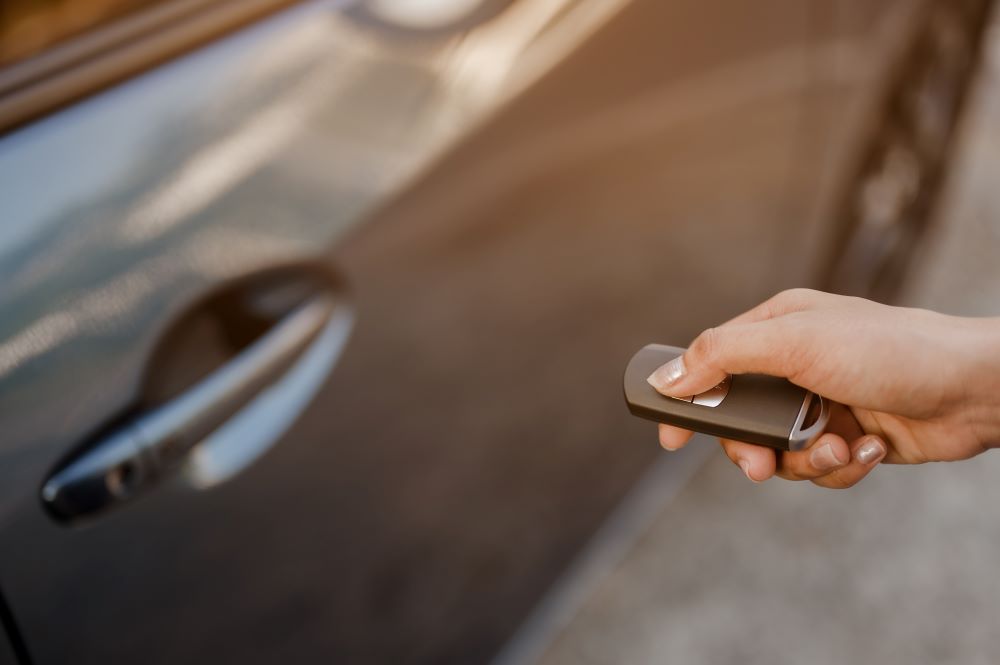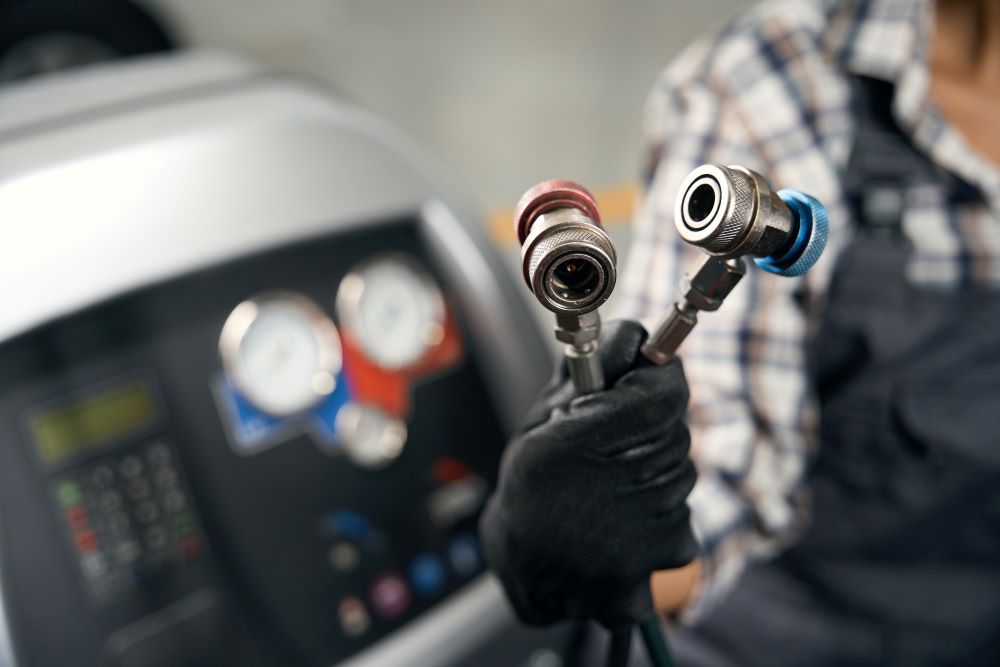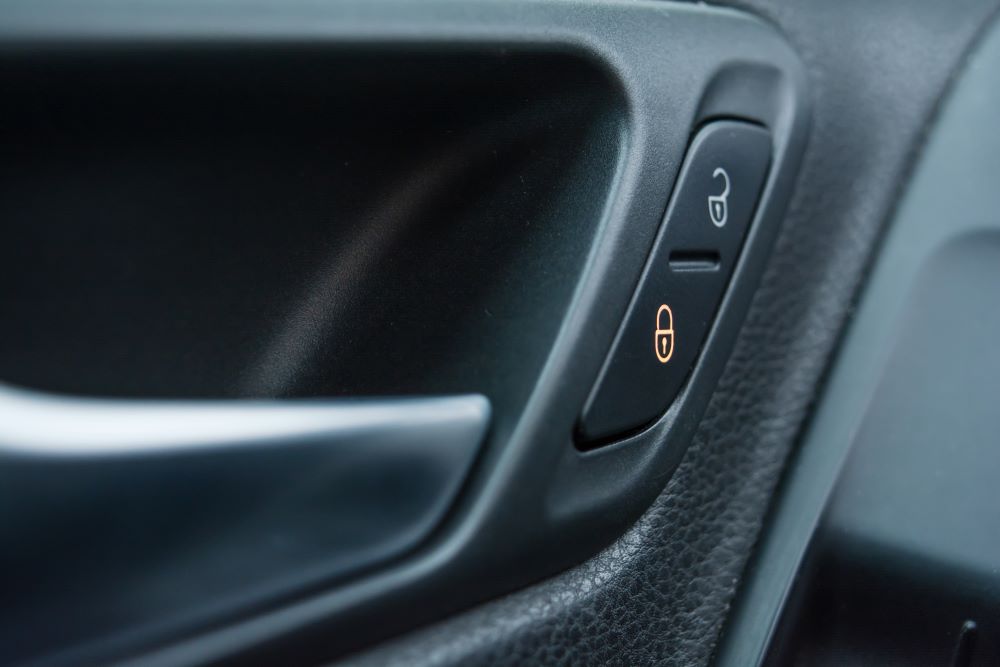9000+ Cashless
Network Garages
96% Claim
Settlement (FY23-24)
24*7 Claims
Support
Click here for new car
I agree to the Terms & Conditions
9000+ Cashless
Network Garages
96% Claim
Settlement (FY23-24)
24*7 Claims
Support
Click here for new car
I agree to the Terms & Conditions

Purchasing a car is usually a big investment, and its safety is a major concern. Here, a central locking system for cars plays an important part. Closing the main driver-side lock ensures that all the locks are closed simply. This way, mistakenly leaving one side of the lock open is impossible.
Are you planning to get a central locking system for your car?
Keep reading this article for a clearer understanding.
Central locking system for cars is an electrical door locking mechanism, one of the popular features in the automobile sector. While it used to be a luxury feature, it has become a mandatory requirement for most people.
Riders are relieved of the burden of locking all their car doors by simply locking one, which is usually the driver's side door.
It also works the same way for unlocking all the doors and also offers a simple button for unlocking the boot. With its advanced mechanical and electronic components, this locking system helps restrict entry and operations of a car, keeping the owners' choices in mind.

The working of a central locking system takes place through key codes and radio waves. However, the procedure of this locking system can be slightly complicated with sophisticated technologies.
The car key acts as a transmitter, while the car is the receiver. This entire system responds to the instructions of the key whenever there is a need. However, this happens only when there is a match between the codes of the receiver and transmitter.
Moreover, an immobiliser plays a part here, which is a useful safety device in the engine. It goes off once the car is locked with a key, preventing its theft by turning off the engine on command of the key.
The sole purpose of a central locking system for cars is to ensure the locking or unlocking of all the car doors at the same time, reducing the burden of owners to lock each one separately. You can either use a remote for this or simply lock one of the doors. The safety of a vehicle increases with this type of lock.
Apart from locking the doors, a central lock can also prevent car theft. It warns drivers through warning lights indicated in the speedometer if they accidentally leave the door open. A sophisticated technology integrated within the mechanism of central locking is responsible for doing this.

Most people use a central locking system in their cars to ensure complete security and other purposes. Here are the main benefits of this system that have drawn the interest of car lovers recently:
The driver or owner of a car gets complete control over the locks and doors with this locking system. You can ensure that there is no possibility of anyone else opening or closing the doors in your absence with such locks.
A central locking system ensures complete security for a vehicle. Simply locking one door ensures that all the doors are locked, and there is no way they can be opened without a key. Moreover, it is difficult to find duplicate keys for such locks, as these are digitally integrated.
With advanced technologies, a central locking system allows Smartphone authentication. This helps you access your car even if you lose your keys. Moreover, it alerts you about unauthorised access to your car, preventing it.
There are options for automatic locking in a central locking system. Here, you can choose automatic locking if your car moves at a certain speed. This is essential to ensure the safety of children in the backseat if the car is moving fast.
If, unfortunately, your car faces an accident, a central locking system allows completely hassle-free entry or exit. This way, you can ensure your safety and avoid breaking anything inside your car in such situations.
The central locking system in a car is a complicated piece of technology and can be controlled by various components. However, the most important one is an instrument called a latch. It usually clings onto a jaw. Every time someone pulls a car door handle, this latch releases this jaw and lets the door open.
This latch comes with an electric motor, also known as the actuator. It contributes to this process by controlling the entire mechanism of central locking. A failing actuator can cause disruptions in the proper functioning of a central locking system.
As discussed earlier, this system is a sophisticated technology which works in coordination with multiple components. These components are listed below:
As discussed already, an actuator is the main component controlling a vehicle's central locking system. With a set of pistons and gears, it lowers the shaft connected to the door’s lock. This shaft extends, which operates this process of locking, making it an important component.
A transponder is located in the key bow and is integral to a central locking system. Its main role is to read and match codes, which allows the engine immobiliser to start and stop. In a keyless entry feature, the immobiliser receives and reads the transponder code once the key reaches its car's proximity.
This button is a convenient feature in central locking, which eliminates any need to use a car key. It is located near the steering wheel and starts the ignition when you press it. While it functions just like a key, there is no requirement for a physical key here.
This component is a remote control supporting keyless entries in a car. Besides locking and unlocking, this component also has other roles, like opening the trunk or turning on the car lights. Precisely, central locking offers another convenience feature, enabling riders to get all these functions by simply pressing a button.
Malfunctioning in a car central locking system is rare but possible, as it requires the coordination of various components and sophisticated technology. Here are some common reasons you can face this issue:
Faulty Solenoid: Solenoids are responsible for multiple functions, such as activating the drive system, fuel injection, locking the doors, controlling the car air conditioning system, etc. If this part becomes faulty, there will be problems with your central locking system.
Blown Fuse: Car fuses are responsible for protecting the electrical wiring in cars. They disconnect the circuit to prevent any damage from over-current and short-circuiting. If the fuse is blown in a vehicle, then its central locking might not work properly.
Drained Car Battery: A car battery is its lifeblood, as it provides the required power to a vehicle. A central locking system will fail to work properly if it is drained or dead.
Faulty Key Fob or Dead Battery: A faulty key fob sometimes fails to operate, causing a central locking system to malfunction. Moreover, if the fob's battery is drained, it is again a problem for a central locking system. You need to look into the key fob to check for these issues.
Damaged Electrical Wires: Broken and damaged electrical wires can cause problems with the key fob, making it challenging for a central locking system to work properly. A broken wire will jolt while making a connection, leading to intermittent power to the locking system.
Hopefully, this answers your questions on central locking systems for cars. As this article pointed out, this type of locking system is ideal for more security to deal with any kind of nuisance regarding cars. Moreover, it can provide multiple convenience features to car owners and riders, ensuring comfortable and safe rides.